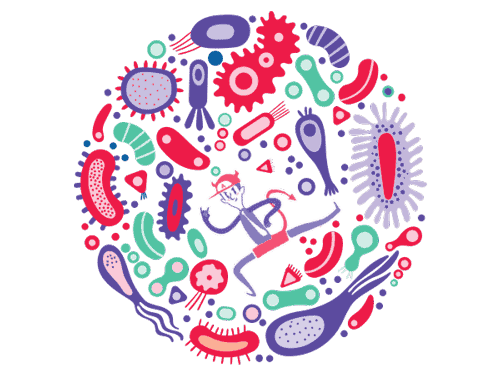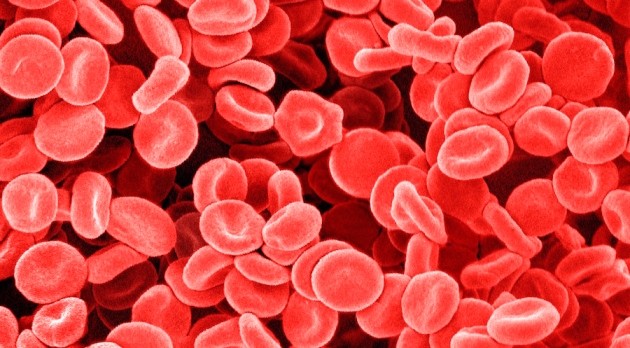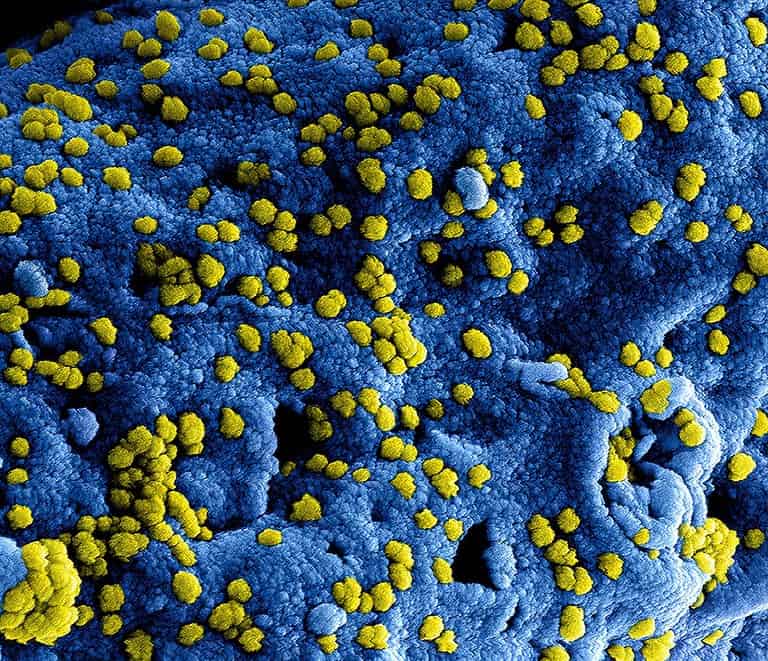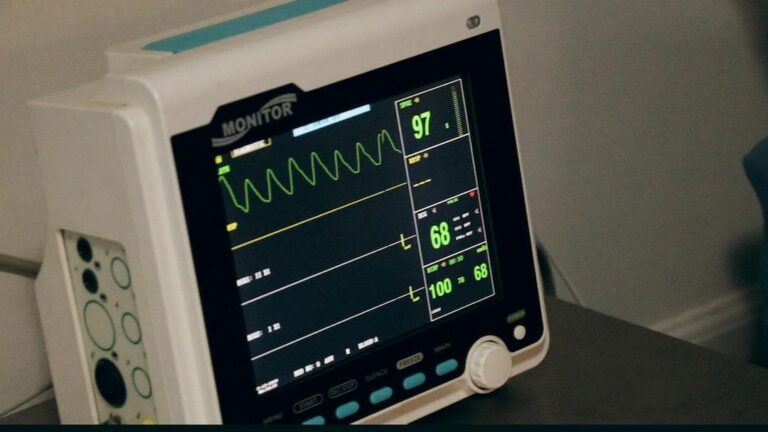How Many Microbiome in Human Body: Your Gut Health Guide
When understanding how many microbiomes are in the human body, one must delve into the complex ecosystem within us. The human microbiome is a complex and dynamic community of microorganisms that significantly influence human health and well-being. In this article, we will investigate the captivating universe of microbes, archaea, and viruses as key components in forming our internal biological systems.
We will also debunk the widely believed 10:1 microbe-to-human cells ratio myth by discussing factors affecting variations between individuals’ microbial populations to know how many microbiomes are in the human body. Furthermore, new estimates on this ratio contribute to a better comprehension of our unique bodily environments. Maintaining a healthy microbiota is essential for optimal health; hence we will examine diet’s impact on gut microbiota composition and lifestyle factors influencing microbial communities.
Table of Contents
- The Human Microbiome: A Complex Ecosystem
- Debunking the 10:1 Microbe-to-Human Cell Ratio Myth
- Maintaining a Healthy Microbiota for Optimal Health
- Frequently Asked Questions
- Conclusion
The Human Microbiome: A Complex Ecosystem
The human microbiome is a diverse and essential ecosystem comprising bacteria, archaea, viruses, and eukaryotes within and outside our bodies. These microorganisms are significant for sustaining general well-being, supplying nourishment, helping to protect against infections, and even being utilized in the treatment of hypersensitivity conditions. Source
Source
Bacteria as Key Players in the Human Microbiome
Bacteria are perhaps the most well-known members of our microbiomes. They can be found on various surfaces of our body, such as skin, mouth, nose, and gastrointestinal tract. In fact, it is estimated that there are about 100 trillion bacterial cells living inside us.
These bacteria contribute to numerous functions, including digestion, production of vitamins, host immune system regulation, and protection from harmful pathogenic organisms.
Archaea’s Role in Maintaining Balance Within the Body
Although less known than bacteria, archaea are another important component of our microbiomes. Archaeal species have been identified primarily within the gut but inhabit other parts like the oral cavity or skin surface.
Their main function involves methane metabolism, which helps maintain a balance between hydrogen-producing fermentative microbes and carbon dioxide-utilizing acetogenic ones, thus contributing to the stability of the intestinal environment. Additionally, some studies suggest that these organisms have a hand in modulating host immunity through interactions with the innate immune system.
Viruses’ Contribution to Immunity
Viral communities – collectively referred to as the virome – are also integral to our microbiomes. Although viruses often have a negative connotation due to their association with diseases, many of them actually play beneficial roles in maintaining health.
For example, bacteriophages (viruses that infect bacteria) can help regulate bacterial populations by selectively killing harmful strains while leaving beneficial ones intact. This selective targeting not only aids in controlling pathogenic organisms but also contributes to shaping overall microbial community structure and function.
Eukaryotes: The Lesser-Known Members of Our Microbiome
Eukaryotes such as fungi and protozoans are also part of our microbiome. These organisms inhabit various body sites, including the skin, oral cavity gastrointestinal tract. Fungi, particularly yeasts like Candida species, play a crucial role in maintaining balance within the gut environment by competing resources and space with other microbes, thereby preventing the overgrowth of potentially harmful pathogens.
On the other hand, some protozoan parasites may contribute negatively to human health, causing infections or exacerbating existing conditions; however, further research is needed to fully understand the implications of these interactions.
Debunking the 10:1 Microbe-to-Human Cell Ratio Myth
In recent years, we know how many microbiomes are in the human body. There has been a significant shift in our understanding of the human microbiome and its relationship with our overall health.
The longstanding notion that we have ten times more microbial cells than human cells has been disproved. This myth originated from an estimate made by Thomas Luckey back in 1972, which was widely accepted until researchers Ron Milo, Ron Sender at Weizmann Institute of Science, along with Shai Fuchs at Hospital for Sick Children re-evaluated these numbers. Source
Source
Factors affecting variations between individuals’ microbial populations
Their findings revealed how many microbiomes are in the human body and that there are approximately equal numbers of microbes (39 trillion) to human cells (30 trillion), challenging previous beliefs about the overwhelming dominance of microorganisms within us. It’s important to note that these estimates can vary greatly among individuals due to age, diet, lifestyle choices, and even geographical location. For example, the gut microbiota composition may differ significantly between people living in rural areas compared to those residing in urban environments.
How new estimates contribute to a better understanding of our internal ecosystems
By recognizing this intricate balance within ourselves, we can make more informed decisions regarding diet and lifestyle choices aimed at nurturing both our own cellular makeup as well as promoting healthy microbial communities.
For instance, research has shown that consuming a diet rich in plant-based foods and fiber can positively impact the diversity of our gut microbiota, which in turn may help prevent chronic diseases such as obesity and type 2 diabetes. Additionally, understanding how factors like stress or lack of sleep can disrupt this delicate balance provides further motivation for modern families to prioritize self-care and wellness practices.
Maintaining a Healthy Microbiota for Optimal Health
Understanding how vital it is to maintain balanced internal ecosystems can help prevent life-threatening illnesses such as cardiovascular disease, among others. For instance, intestinal dysbiosis – an imbalance of normal functioning intestinal flora – has been associated with obesity, diabetes, inflammatory bowel syndrome, and autoimmune disorders. Thus, exploring ways to optimize our health through diet lifestyle choices or medical interventions becomes increasingly relevant for modern families striving towards healthier independent lifestyles.
Diet’s Impact on Gut Microbiota Composition
A well-balanced diet plays a significant role in maintaining the diversity and balance of gut microbiota. Consuming foods rich in fiber, like fruits, vegetables, and whole grains, promotes the growth of beneficial bacteria that aid digestion and nutrient absorption. Diets high in processed foods and sugars can cause an imbalance of gut microbiota, which may lead to various health problems.
Lifestyle Factors Influencing Microbial Communities
Beyond dietary choices, several lifestyle factors play crucial roles in shaping our microbial communities:
- Exercise: Regular physical activity has been shown to positively influence gut microbial composition, promoting the growth of beneficial bacteria. A study published in the journal Microbiome found that exercise increases bacterial diversity and improves overall gut health.
- Sleep: Adequate sleep is essential for maintaining a healthy gut ecosystem. Research has revealed that inadequate slumber can result in an irregularity of gut bacteria, possibly making someone more prone to various illnesses.
- Stress Management: Chronic stress negatively impacts our innate immune system and can disrupt the balance of our microbiota. Incorporating stress-reducing practices such as meditation or yoga into your daily routine may help maintain a healthier microbial community within your body.
Frequently Asked Questions
How many microbiomes are in the human body?
The human body is home to an estimated 39 trillion microorganisms, collectively known as the microbiome. These microbes are found in various parts of the body, including the skin, mouth, gut, and nose. They play a vital role in maintaining health by providing protection from pathogens and helping to regulate metabolism and digestion.
Does the human body need a microbiome?
These microbes are found on the skin, in the mouth, and throughout the gastrointestinal tract. Microbes found in the human body are essential for proper functioning, providing advantages such as improved digestion, immunity support, metabolism regulation, and even mental health.
The microbial composition of an individual’s body typically consists of bacteria, archaea, fungi, protozoa, and viruses essential for digestion, immunity, metabolism, and mental health. A healthy balance of these organisms helps to maintain a person’s overall wellness by providing essential nutrients and protecting against harmful pathogens.
Conclusion
How many microbiomes are in the human body? We have enough to ensure the smooth running of our systems. The microbiome is a highly intricate and ever-changing ecosystem with great influence on our health, so it’s essential to comprehend the elements that can affect it and how to promote its diverse microbiomes for optimal well-being.
It’s important to understand the factors that can influence it, as well as strategies for supporting its many microbiomes in order to ensure optimal well-being. Taking steps such as eating a variety of nutrient-rich foods, managing stress levels, exercising regularly, and taking probiotics can help promote balance within the body’s microbial community and support good health overall.
Discover how to maintain a healthy balance of the estimated 100 trillion microbes in your body with Smart Living Now‘s comprehensive wellness and self-care resources. Take control of your health today for a healthier, more independent life!






